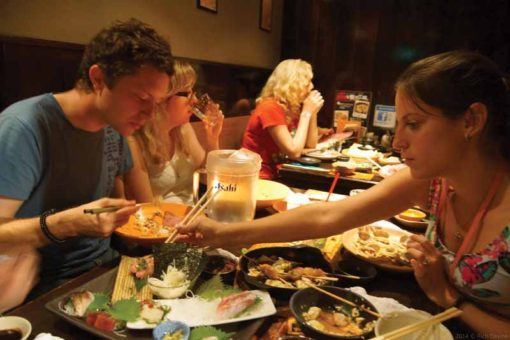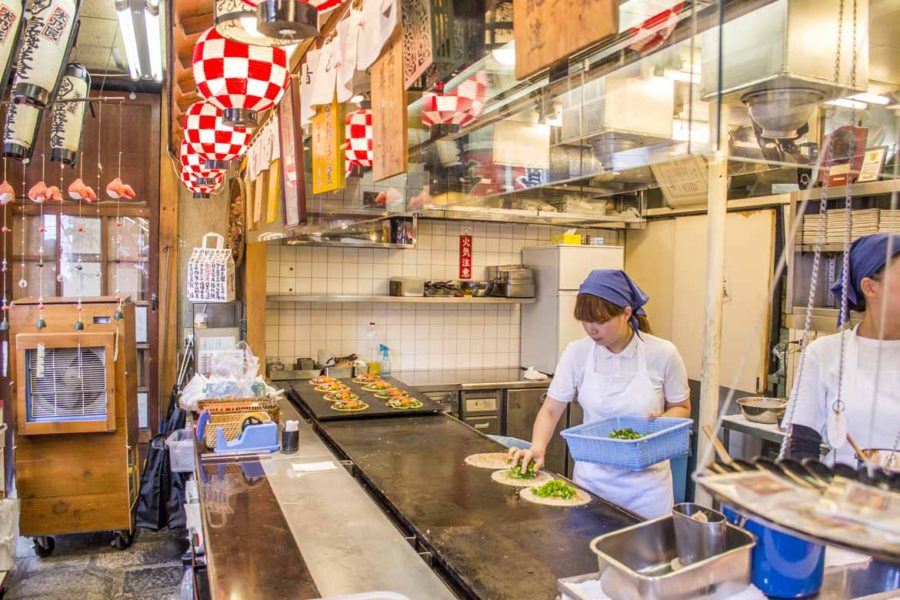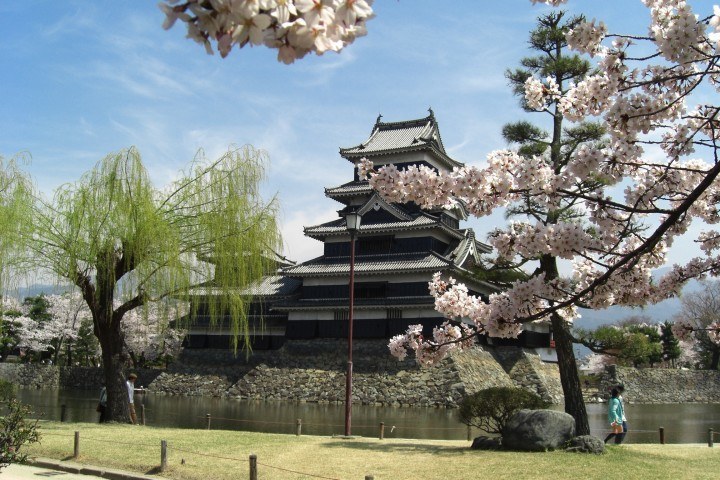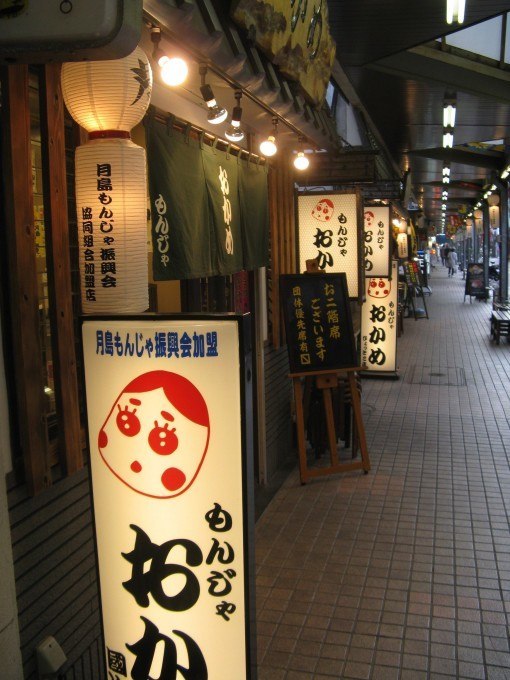Like this post? Help us by sharing it!
As someone who made Japan home back in 2005, tour leader Marky Hobold certainly knows his way around the foodie scene. Don’t leave Japan without trying his top regional dishes.
Five best regional dishes in Japan
When travelling abroad, eating food is often one of the best parts of the experience – Japan is no exception. In other countries the concept of “Japanese cuisine” may seem monolithic, but in reality, this is definitely not the case.
There are hundreds of regional variations of dishes, with differences ranging from alternative preparation to things like the consistency of the soy sauce; here are five of the best ones to try!
Takoyaki
Takoyaki, also written tako-yaki, can be found throughout the country, but the dish originated in Osaka. It’s basically a ball of pancake dough cooked on a cast iron grill with a tiny piece of octopus leg inside. The dish is a popular street food that you can find on nearly every corner of the busy parts of town.
Osaka-style takoyaki tends to be soft and has a subtly flavoured dough, but Tokyo has its own version – crispy on the outside and soft on the inside. While city rivalries rage, proud Osakans can claim ownership of this delicacy because of its local origins.
Ramen
Wait. What? Ramen, also written rāmen, is a regional dish? Yes and no. Ramen is a ubiquitous fast food, but many cities and areas have their own spin on this cherished bowl of noodles. Fukuoka in northern Kyushu is famous for tonkotsu ramen which has a thick broth made with slow-cooked pork bones.
In Sapporo in southern Hokkaido, miso ramen, made from a salty, fermented soy bean paste, is the local flavour. Also popular in the area is curry ramen, whose main ingredient is pretty obvious. Shio ramen has a subtle salt-infused soup and originated in the nearby city of Hakodate, also in Hokkaido.
Tokyoites claim ownership of shōyu ramen (soy sauce), arguably the most orthodox type, which is thought to be the forerunner of all other types and spread due to the cultural influence of the capital.
Sanzoku-yaki
As far as this list is concerned, sanzoku-yaki is the most obscure – many Japanese people don’t even know about it. However, it’s super easy to find in Nagano Prefecture, particularly in the city of Matsumoto.
Fried chicken in Japan is usually ball-shaped and made from dark meat, but in this region it’s usually a white meat fillet. Not only does the chicken taste different, the seasoning in the extra crispy crust adds a mouthwatering aromatic kick. Served hot or at room temperature, this home-style dish can be found throughout the area, but some of the best spots to get it are in supermarkets before hopping on a train or bus en route to your next destination.
Okonomiyaki
Okonomiyaki means something like “cooked as you like it” and is often described as a savoury pancake. It was popularised in western Japan, most notably Osaka, in the so-called “lean years” after the war, because it was easy to make. Everyone could afford flour, water, and had some leftover vegetables, seafood, or meat.
The typical dish is usually covered with a thick Worcestershire-based sauce, mayonnaise, powdered seaweed, and dried bonito flakes. Hiroshima has its own version, called Hiroshima-yaki, made with noodles and a grilled egg. The dish is so popular in the city, you can find a shop on almost every corner.
Monjayaki
Monjayaki, also just called monja by locals, was popularised in post-war Tokyo and resembles okonomiyaki… to an extent. It too was a product of the “lean years” and resembles the former dish, but with more water and less flour.
This wet to dry ratio results in something less like a pancake and more like a thin, amorphous blob of bubbly goo. It’s not much to look at, but variations are far more numerous than okonomiyaki. There are so many, in fact, that Tokyo’s Tsukishima area has three whole blocks home to roughly 70 shops specialising in standard forms of the dish, as well as more exotic types.
For me, the best thing about monjayaki is that you cook it yourself at the table. But don’t worry. If you don’t know how to do it – and believe me, it is tricky – you can always ask the staff for help.
I hope this list of awesome local foods has whet your appetite for Japan’s vast gastronomical landscape. While you’re on tour, may you have many, many chances to say oishii desu (“it’s delicious”)!

Eat your way around Japan on our Gastronomic Adventure self-guided trip.
Alternatively, take a Japan Small Group Tours with a tour leader for top tips on the best restaurants and a little help navigating the menu.







